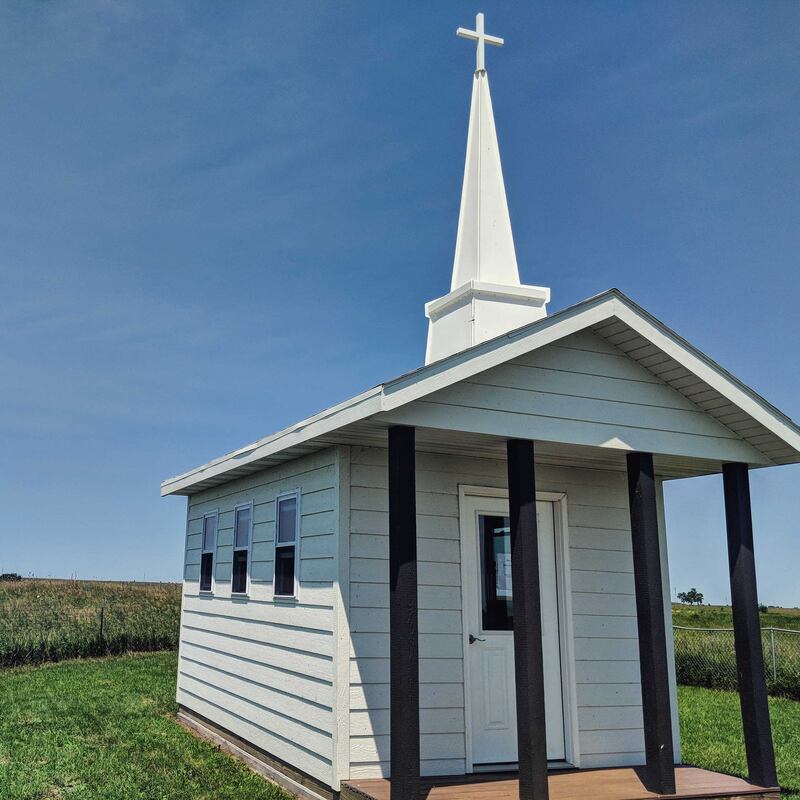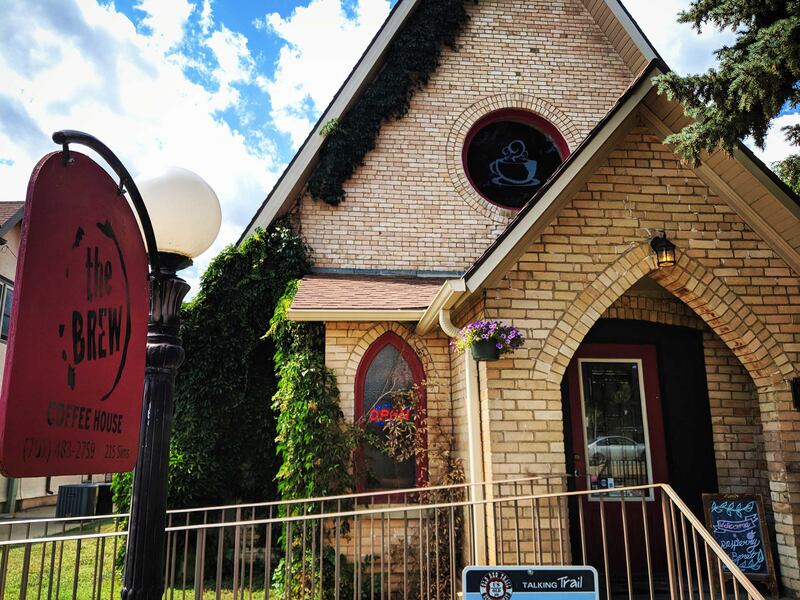“Cover the earth before it covers you,” said philosopher Dagobert D. Runes. American travelers apparently agree, as there has been a record number of visitors to the national parks since 2016 (over 330 million) and a sharp increase in U.S. vacations by road trip—from 22 percent in 2015 to 39 percent in 2016.
And yet, as vacationers are covering the earth on this side of life, it doesn’t mean they aren’t also thinking about covering heaven as well.
This summer, as I joined other Americans in another lengthy summer road trip out West, I took note of the many things roadtrippers need while on the road. Things like gas under $3.00 a gallon, food that isn’t stomach wrenching, restrooms without 40 grit sandpaper in stalls, and apparently, roadside chapels for worship and prayer.
ADVERTISEMENT
It wouldn’t be an American road trip, after all, without chapels.

Roadside attractions can be more than the Ventriloquist Museum in Kentucky—which is not creepy at all, of course—or Lenny, the Chocolate Moose in Maine. They may include these brief spiritual retreats from a burgeoning road rage.
When I was a kid, our family road trips frequently included being away on Sundays. My father, who is a pastor, would sometimes find a church for us to visit when we were away.
Likewise, for many religious Americans, traveling may be a chance to “get away from it all,” but for those God-fearing Christians, there is no fleeing an all-seeing deity. As the psalmist says, “If I ascend to heaven, you are there, if I make my bed in Sheol, behold, you are there” (Psalm 139:8)—and on American roads, the writer might as well add “if I ascend the heights of Glacier National Park or drive eternally through Montana,” you are there too.
(By the way, I drove Route 200 in Montana and I’m fairly certain nobody was there.)

Given my background as a former Christian—and as a former seminary professor—many of these roadside chapels stood out to me. Along I-90’s Westbound route in South Dakota, for example, we stopped at a public rest area in White Lake which had a small, steeple-capped white chapel. The fenced-in building, sponsored by local congregations, could only be described as the church version of a tiny house.
At this “wayside chapel,” spiritually “weary travelers”—although, by my count, there is only enough room for 10—will find Bible tracts preaching repentance, an altar to pray at, and wooden pews. The small chapel even hosts weddings—tiny ones, of course.
A roadside chapel in miniature like this is not unique, they are kind of a thing—I googled it—but a few other chapels I encountered along my road trip were attached to more exotic flare.
Immediately upon exiting Badlands National Park is Wall, South Dakota, the home of Wall Drug Store—named among the “Kitschiest Roadside Attractions in America” by Travel and Leisure. Founded by Ted Hustead in 1931, Wall Drug became a desert oasis when Hustead’s wife Dorothy gave away free ice water to travelers.
Wall Drug is the home of Western-related souvenirs—like gun holsters and Western art—life-sized figures of famous cowboys, a mythical jackalope statue you can mount, and (of course) Chuck E. Cheese-grade animatronics, like a piano-playing gorilla and dinosaurs.
But amid the mostly indoors pomp and show—and just down the hall from the statue of an Old West burlesque performer—is “The Travelers Chapel.” Hustead sought a town with a pharmacy he could buy and a Catholic church he could attend. This modest chapel is lined with a single row of pews, tasteful stained-glass windows, and has just a few Catholic icons. It is a surprising contrast to the grand spectacle that is Wall Drug—a religious version of Dorothy’s ice water.
While one can easily be drawn into the unexpected show of a chapel surrounded by animatronic cowboys, other moments of roadside religion were more serene and connected to Western geography.
At Grand Teton National Park there is a log chapel connected to Jackson Lake and surrounded by the awe-inducing Teton mountain range. The Chapel of the Sacred Heart is the unassuming historic mission of Our Lady of the Mountains and holds regular weekend masses during the summer months, appealing to Catholic tourists.
An historic building founded in the late 1930s, the rustic, dimly lit chapel has a few traditional icons (like the Virgin Mary), pews bookended by images representing the stations of the cross, and a single, round stained-glass window. Tourists visiting Grand Teton frequently discover, and make use of, the church on the way to other park highlights.
But on this road trip, I also discovered how others had more radical ideas about ministering to the random traveler.
Just outside Glacier National Park, the spectacle returned in the form of the Ten Commandment Park, a fundamentalist roadside attraction built in front of a junkyard and anchored at the exit by a bright yellow revival tent, where I could hear a sermon finishing up. The Glacier-bound, road-weary visitor could be lured into the park by its offer of free food, the need for a hit of that old-fashioned religion, or simply out of curiosity.
From the entrance, cars can drive a short half-circle loop, which rounds three large crosses and is flanked by billboards—a lot of billboards—quoting the Ten Commandments. These reminded visitors to “not steal” or “commit adultery,” sometimes underscored by stock photography of things like crime-scene tape overlaid with “thou shalt not kill.”
Alongside biblical passages, there are portraits of American presidents (Lincoln and Roosevelt) praising the Bible, and Ronald Reagan declaring: “If we ever forget that we are One Nation Under God, then we will be a nation gone under.”
While I’m no longer a religious person, I do understand the appeal of these places for others. They all connect to a niche American traveler in unique ways.
But just because these places were not for me, it doesn’t mean I didn’t find my own chapel.
Before I depart on a road trip, I look for interesting coffee shops along my route as my own type of healing balm—a temporarily replacement for my hometown sanctuaries, like Maddie & Bella in Ohio. And as it happens, I found my roadside respite in Dickinson, North Dakota near Theodore Roosevelt National Park, which took the form of a small former house of worship converted into a coffee house.
Originally St. John’s Episcopal Church, this humble brown-brick building with its vaulted wood-ceiling was the church that Theodore Roosevelt worshipped at whenever he was in the area. Now part of the Old Red Ten Scenic Byway Trail, it is known as The Brew.
Still carrying all the charm of a small church, including stained-glass windows and pews for seats, it harbored the lofty incense of brewed coffee. When I walked in, I immediately knew I found my people.
And so I discovered, that even while road-tripping over 5,000 miles across the American West, where faith has many faces and contexts, there is a chapel for everyone—even a caffeine-worshipping heathen like me.






